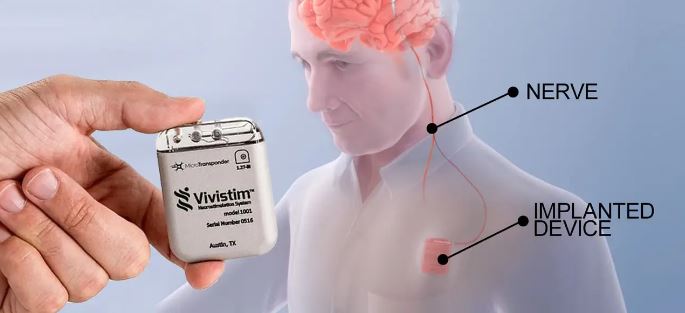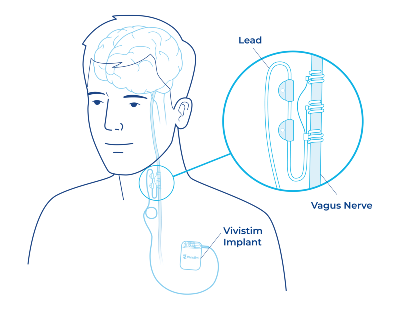Silver Cross Therapists Offer New Hope for Stroke Patients
Ashlie Broadhurst and her team of therapists at Shirley Ryan AbilityLab at Silver Cross in New Lenox have seen firsthand the frustration of stroke patients who hit a plateau in their ability to regain mobility in their arms and hands, even after weeks of therapy.
 Now, there is hope for even better outcomes, said Broadhurst, Clinical Manager of Outpatient Rehabilitation at the Shirley Ryan AbilityLab (SRAL) at Silver Cross.
Now, there is hope for even better outcomes, said Broadhurst, Clinical Manager of Outpatient Rehabilitation at the Shirley Ryan AbilityLab (SRAL) at Silver Cross.
Vagus Nerve Stimulation has been used for years to treat patients with seizures, depression and other neurological disorders. In August 2021, the FDA approved Vivistim – an implantable Vagus Nerve Stimulator that gets paired with occupational therapy – to help bring stroke patients’ arm function to the next level.
How Vivistim Works
If a patient qualifies for Vivistim, a doctor implants a device under the left side of the chest in an outpatient procedure. The device delivers a gentle pulse to the vagus nerve while the patient performs a specific task such as putting on a hat, brushing hair or cutting food.
 This simultaneous pairing of the rehab exercise with vagus nerve stimulation releases neuromodulators that help create or strengthen neural connections, improve upper limb function and increase the relevance of occupational therapy.
This simultaneous pairing of the rehab exercise with vagus nerve stimulation releases neuromodulators that help create or strengthen neural connections, improve upper limb function and increase the relevance of occupational therapy.
At home, the stroke survivor can swipe the Vivistim magnet over the device to activate the system during daily activities and exercise. The at-home Vivistim Therapy, in conjunction with in-clinic rehabilitation, helps stroke survivors get back to doing what matters most to them while enhancing their quality of life.
Broadhurst learned of Vivistim last year from a former Silver Cross volunteer who now is an occupational therapist working for the company that developed the system. After a presentation, she and two of her therapists trained in using Vivistim in conjunction with therapy.
She and her team are ready to work with qualified stroke patients.
“I’ve heard and seen the patient stories following the combined therapy. This is really exciting for chronic stroke patients who have hit a plateau in their therapy,” she said.
“We have been spreading the word about Vivistim to patients and to their neurologists,” she added.
Are You a Candidate for Vivistim?
Age isn’t a factor, Broadhurst added. The ideal candidate is at least six months post-stroke and has moderate to severe upper extremity impairment. Patients also must be able to handle surgery to implant the device, and, she adds, be motivated to complete the therapy regimen.
Following the Vivistim placement procedure, patients can now be scheduled to complete their outpatient occupational therapy for 90-minute therapy sessions three times a week for six weeks, right at the SRAL Outpatient Therapy Clinic at Silver Cross.
“There are currently surgeons throughout Chicagoland performing this procedure,” Broadhurst said. “I’m sure there are people in our area who qualify for the procedure who don’t want to drive in to Chicago three times a week for therapy. They want something closer. Now they have it right here with us.”
To learn more about Vivistim Therapy, please visit www.vivistim.com, or call (844) 848-4784. To schedule an appointment for occupational therapy with a physician’s order at the Shirley Ryan AbilityLab at Silver Cross, call (815) 300-7110.